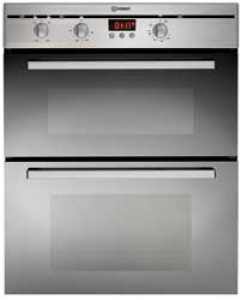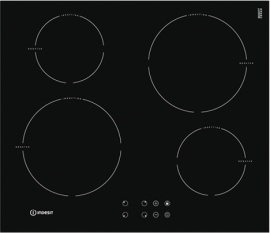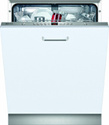Cooking Appliance Features Guide
Cooking Appliances Feature Guide
General Cooker Terminology
Cool Door:
A feature which you may find on a cooking appliance with a door. It is a feature that keeps the door cool during the cooking phase so that it is possible to touch the outside of the door while it's cooking without potentially burning yourself.
FSD:
FSD stands for Flame Safety Device (sometimes listed as flame supervision device or flame failure device). This is a feature on gas appliances which cuts the gas supply off should the flame cut out. This stops the appliance from constantly pumping out gas which isn't being turned in to a flame which would be potentially lethal.
Pyrolytic Cleaning:
Pyrolytic cleaning is a type of self cleaning that you can find in some modern ovens. It is an easy and effective way to clean your oven which works by the oven running a cycle where it heats itself up to temperatures of 500 degrees reducing any food or grease stains in the oven to ash. Once the cycle has run you just need to wipe away the ash from the oven cavity to be left with a clean oven.

Catalytic Cleaning:
A catalytic cleaning is more of a passive cleaning system. These work by having the oven walls lined with a special material that absorbs the spills and mess from the food and breaks it down as it cooks. This means when it comes to cleaning the oven it won't be nearly as dirty as a normal oven would and will be easier to clean.
Convection Oven:
Convection ovens are an oven which use a fan inside the oven to circulate the air around which can create an equal temperature inside the whole cavity allowing you to evenly cook food no matter where it is located in the oven cavity.
Single/Double Cavity:
The cavity is an alternative way for specifying how many cooking compartments an oven will have. The majority of freestanding cookers will have 2 cavities which is compiled of a main oven and then a separate oven/grill.
Cooking Zones:
This is a number you will find in reference to a hob or the hob top on a cooker. It simply lets you know how many different rings there are available to cook on on the hob.
Fuel Type
The fuel type is letting you know what kind of fuel the cooking appliance will be using to cook your food. There are 2 main fuel types available, those being gas and electric. Gas appliances can then be further broken down to Natural Gas (NG) or Liquefied Petroleum Gas (LPG).
Natural Gas (NG):
Natural Gas is generally the cheaper of the 2 gas options but it requires your home to already be fitted with the gas work to allow delivery of the gas to your appliances. If you don't have the pipe work laid then you will need to use LPG.
Liquefied Petroleum Gas (LPG):
LPG is an alternative gas type which is sometimes also known as bottled gas. This is because instead of being distributed through your home via a pipe system it comes in a bottled format. This means your not restricted by weather your home has access to a mains gas pipe line.
Hob Types
Induction Hob:

Induction hobs are a modern style of hob where instead of the cooking surface being heated up directly, the heat is transferred directly to the pan via an electromagnetic field. This has multiple benefits including being able to heat the pan (and thus the food/liquid inside the pan) faster and being safer than a normal hob as the hob stays fairly cool to the touch.
The only thing to watch out for with an Induction hob is that because the technology to make it work requires creating a powerful electromagnetic field, it can interfere with your pacemaker if you're wearing one. Therefore if you do wear a pacemaker it is advised to get professional advice before buying one.
Gas Hob:
The classic and most popular hob type available. A gas hob uses gas fuel to ignite a flame which is used to heat the pans. As it's an open flame it is able to not only heat the base of the pan but also curve around it making it a necessity for Wok basked dishes.
Another main benefit of a gas hob is the fact that once ignited you can get instant heat to the pan (unlike electric where it needs to heat up first) which can be easily controlled.
Electric Ceramic Hob:
Sitting flush in the worktop a ceramic hob is a popular choice for a cheaper hob. They are easy to clean thanks to them sitting flush in the worktop, but they don't have the same heat distribution that a gas hob has as they are only able to heat up the flat base of the pan which touches the hob.
Solid Plate Hob:
These types of hobs tend to be popular due to their cheap cost but as the price difference between one and a ceramic hob gets smaller and smaller they have started to become less and less popular. There are still some being manufactured and you will also find them featured on mini kitchens, such as the Whirlpool and Gorenje.





















